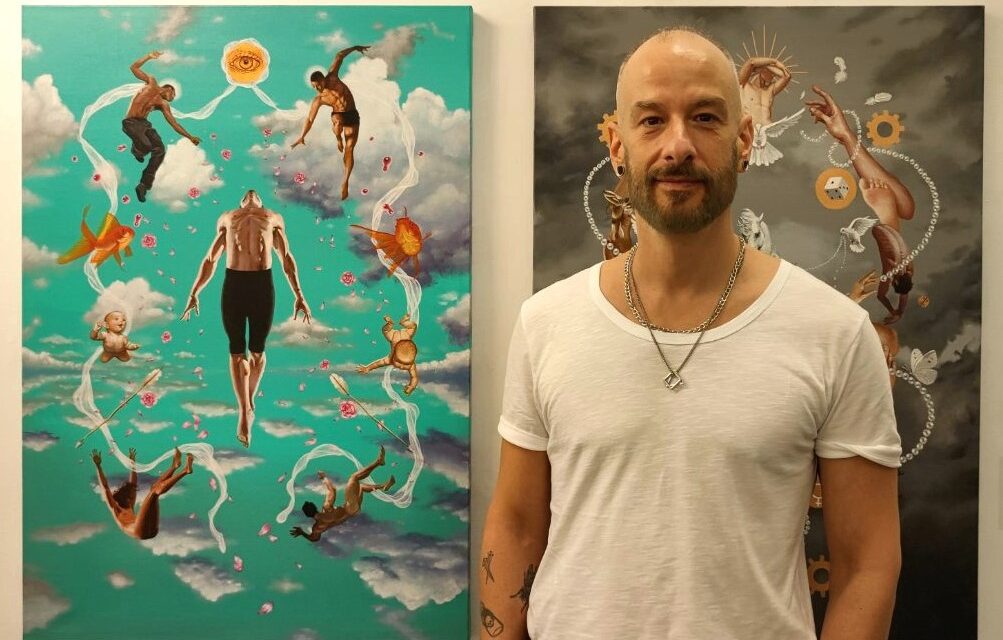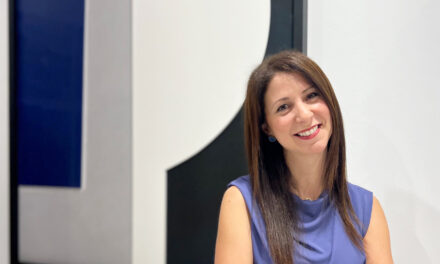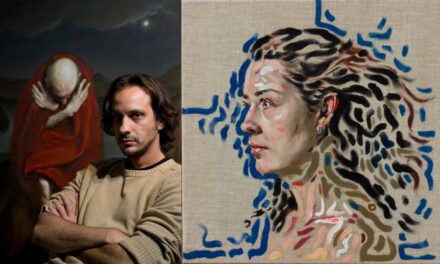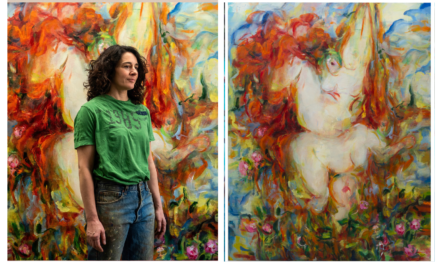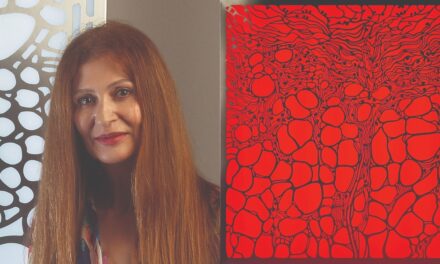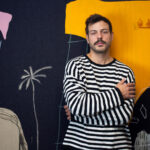Stamatis Theocharis presents his solo exhibition Viscera, a vivid tapestry of emotions and reflections conveying profound personal narratives, at Alma Gallery. Embracing pop art, Art Deco, and art nouveau elements, he guides us through his innermost thoughts.
An ambivalent, surrealistic world unfolds, welcoming serendipity, and redemption, finally leading to a visual and emotional catharsis. Naked bodies, symbols and animals give rise to a fluid, constantly changing world, that aspires to eliminate stereotypes about gender and sexuality.
Stamatis Theocharis was born in Athens. He studied at the School of Fine Arts in Thessaloniki and graduated with honors from the workshop of Evangelos Dimitreas in 2000. He lives and works in Athens. He has presented four solo exhibitions and has participated in numerous group exhibitions.

The artist talks to Greek News Agenda and offers a glimpse into his practice and inspiration.
How did the title of the exhibition, Viscera, come about?
Viscera is the Latin word for the internal soft organs of the body. I use it as an allegory to convey the idea of introspection as well as the feelings that are generated through our interaction with others, the relationships we develop and the way we respond to others. Let us assume that our internal organs are sensitive and need the outer shell of our body to be protected. This is how I approach our emotional world and the ways we manage it, sometimes through our defenses, sometimes extroverted in search of personal redemption.
How is your personal experience reflected in your work? Would you consider this a necessary condition for authentic artistic creation?
The themes I use in my works always arise either from my own experiences or from ideas and emotions that concern me. I believe that what makes a work of art good is not the technical skills of the artist, but the artist’s sincere intentions. This comes either through personal experience, introspection and inner searching.
After all, part of the artistic process stems from the relationship between the work of art and the viewer. From this point of view, many things are very much determined by the true intentions of the artist and the receptivity of the viewer.

Your art is influenced by various artistic movements, leading to the creation of a surrealistic universe. What purposes does each of them serve in the final result?
First of all, both as a person and as an artist I have always been concerned with aesthetics. In that sense, when it comes to art, I am not only concerned with the conceptual background but also with the aesthetic perspective, which is equally important to me.
Apart from visual arts, my interest in decoration and make-up has also prompted my interest in harmony and symmetry, which I try to apply in my paintings. These are the characteristics that have always attracted me to the Art Nouveau and Art Deco movements from which I draw inspiration. For me as a viewer, the aesthetics in a painting is something that excites me even if it is not the goal of a work of art. It’s just a personal preference.
With this in mind, I create art that is at first sight appealing to the eye but at a second glance allows the viewer to “read” hidden meanings and concepts.

What role do nudity, allegory and symbols play in your work?
Even before studying at the School of Fine Arts, I had realized that nudes and nature are the basis for mastering painting skills. Then came my love for the human body in all its forms and versions. The naked body symbolizes the vulnerability and at the same time, the strength of human nature and this is why it is a recurring motif in my art.
As a human being, I believe I am quite anthropocentric. I have a natural curiosity about the thoughts and feelings of the people I come across. This is expressed in my paintings by depicting human bodies that through their nakedness show their vulnerability or strength, their personal history and condition.
As for the symbolisms and allegories in my works, they are the means to create the puzzles and the surreal environment where the protagonists of my compositions live and allow the viewer to give his interpretation to what he sees. He can identify, sympathize or even resent them. For me, since I work with representational painting, it is important not to always make the narrative so obvious for the viewer, but to leave room for different interpretations, regardless of what I want to say as an artist.

Gender identity and prejudice are key aspects of your themes. As a society, do you think we have moved forward in that respect?
As I said before, it is important for me, as an artist, to express in my work ideas and feelings that concern me and that I want to communicate to the viewer. The issues of sexuality, gender identity, love and human relationships in general are universal and timeless. In terms of Greek reality, they are even more relevant.
Same-sex marriage legislation, trans visibility, femicides and crimes of passion are in the news almost daily. I observe my reactions to them. It is impossible for me not to react since they are issues that concern me as well. I believe that as a society we are at a turning point. We are trying to adapt to new facts, to deal with these issues with more sensitivity, and as a result, a gap is being created which on the one hand shows a tendency towards progress and on the other a retreat towards more conservative beliefs.
In terms of art and how it affects society, I think its role has always been crucial. I don’t necessarily think that the role of the artist has to be political. Nevertheless, art comes with freedom. Thus, a variety of ideas are expressed and make us reconsider several issues.
Your work alludes to a fluid world where everyone is looking for redemption. Do you think that reality today resembles this situation?
Humanity and the world we live in is a work in progress. That’s how I perceive it. Fluidity and constant movement in a suspended environment are the symbols I choose to convey this idea. Either personally or as a whole, humans seek redemption, sometimes subconsciously and unintentionally, sometimes purposefully and intentionally. I believe that life and the reality we live in are fluid and in motion. We each seek to find our path and purpose with the ultimate goal of catharsis and inner redemption.
*Interview by Dora Trogadi
TAGS: ARTS

